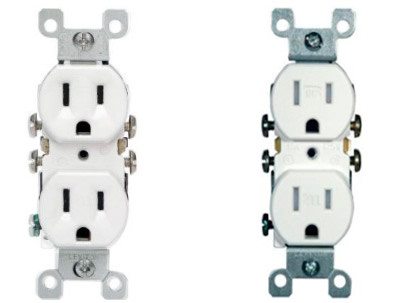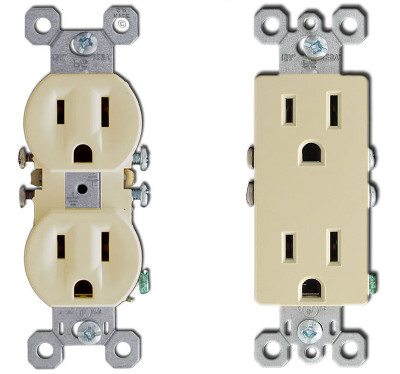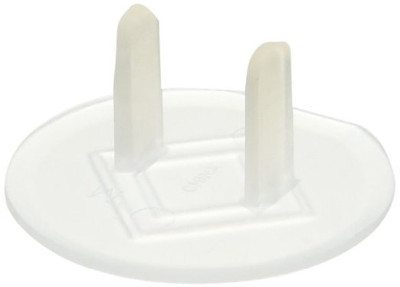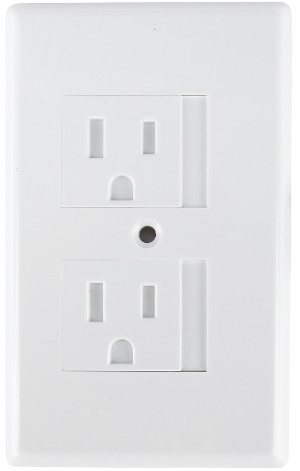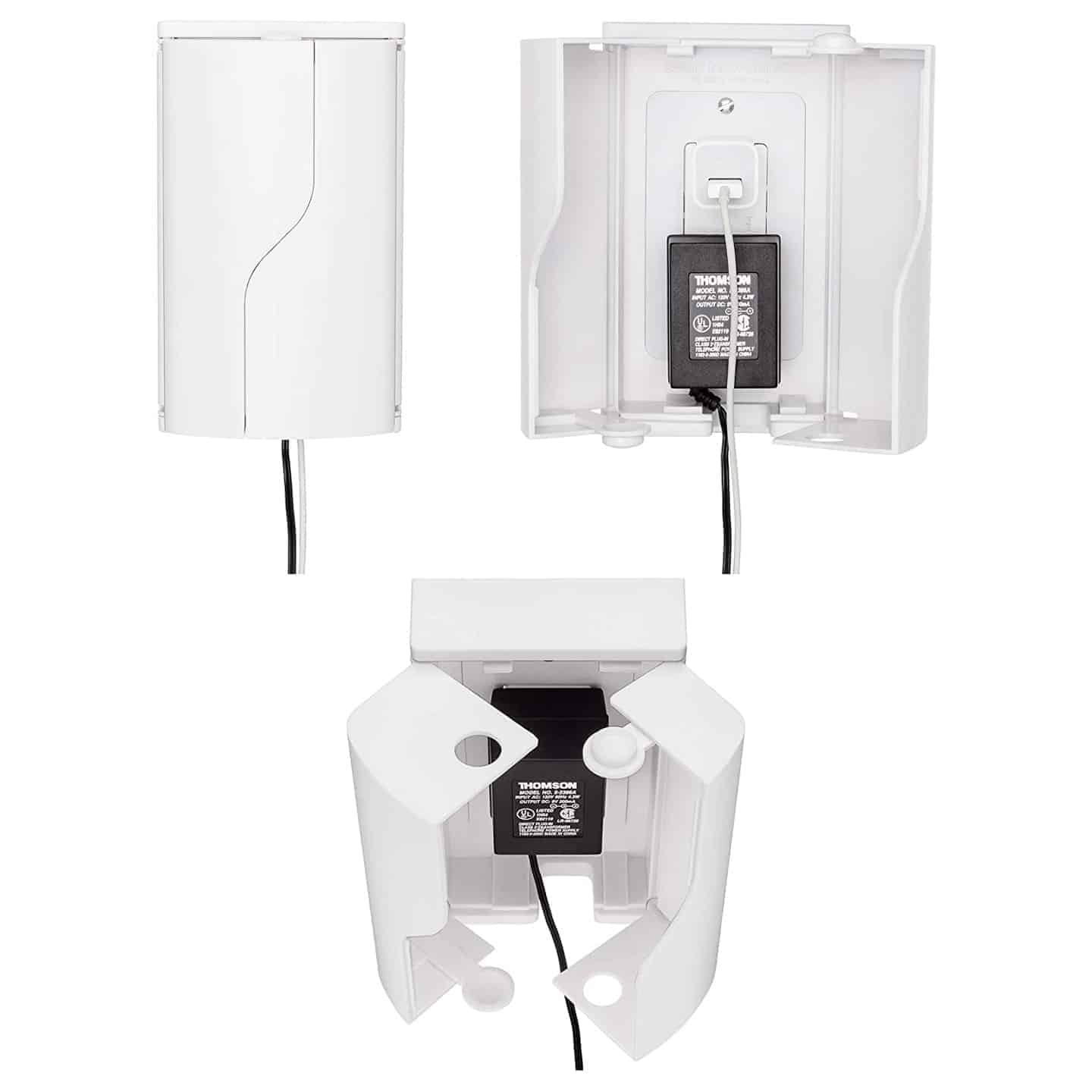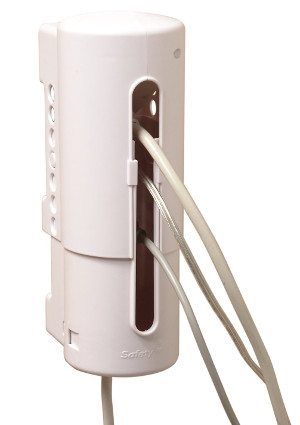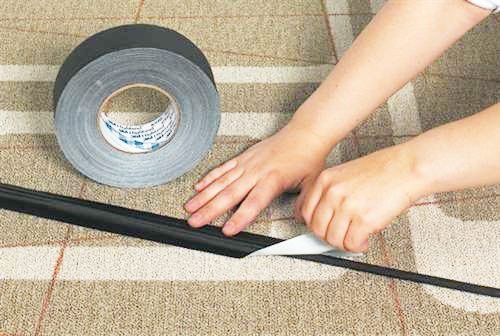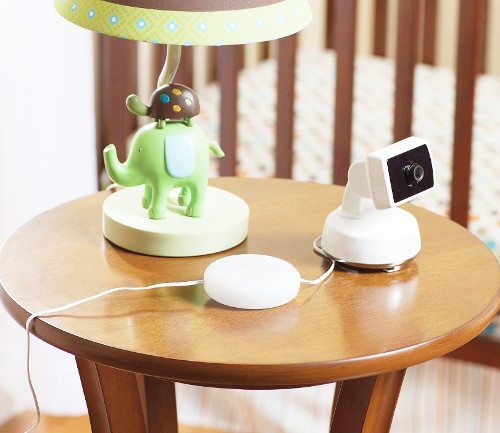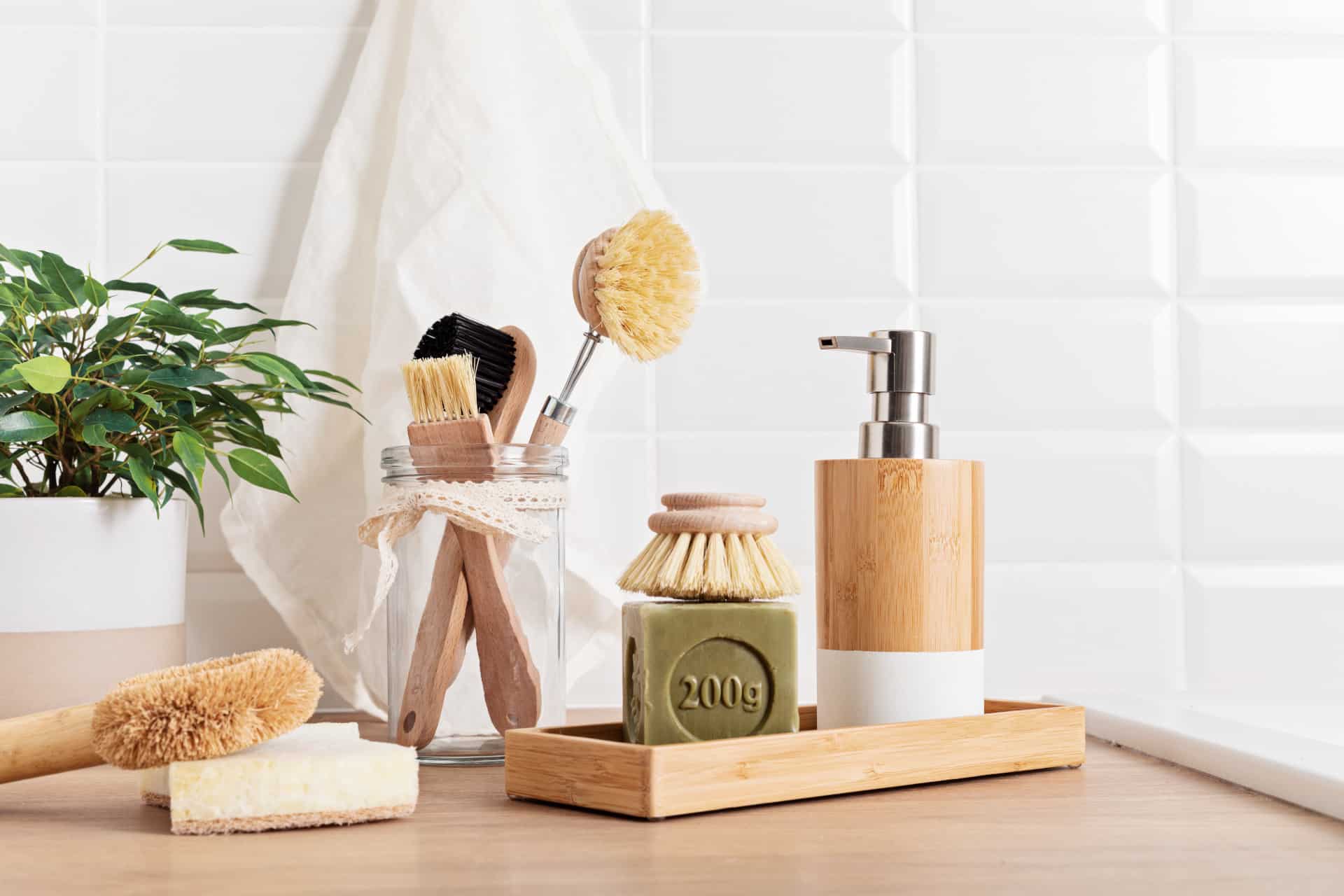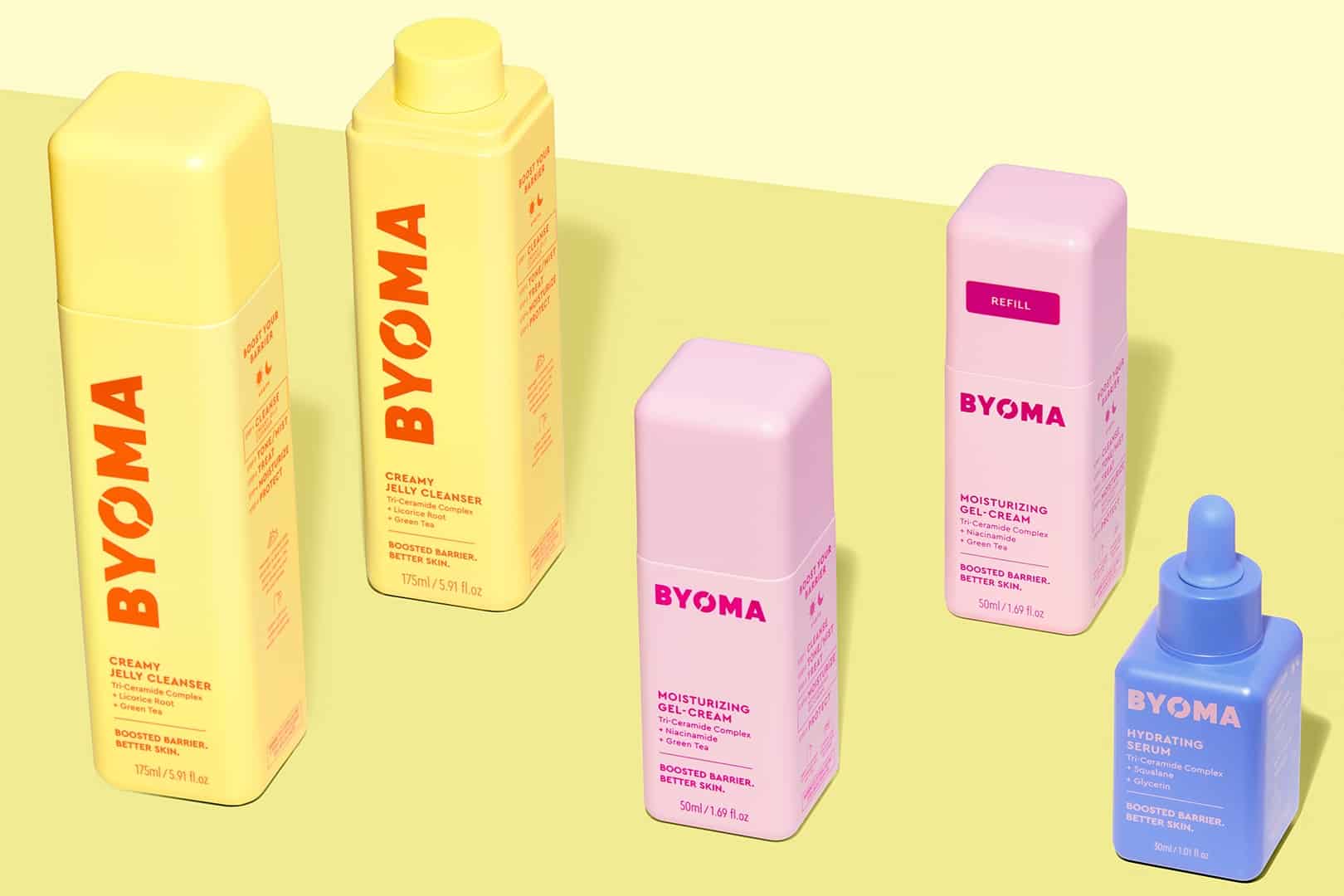How to Baby-Proof Electrical Outlets & Cords Like an Expert
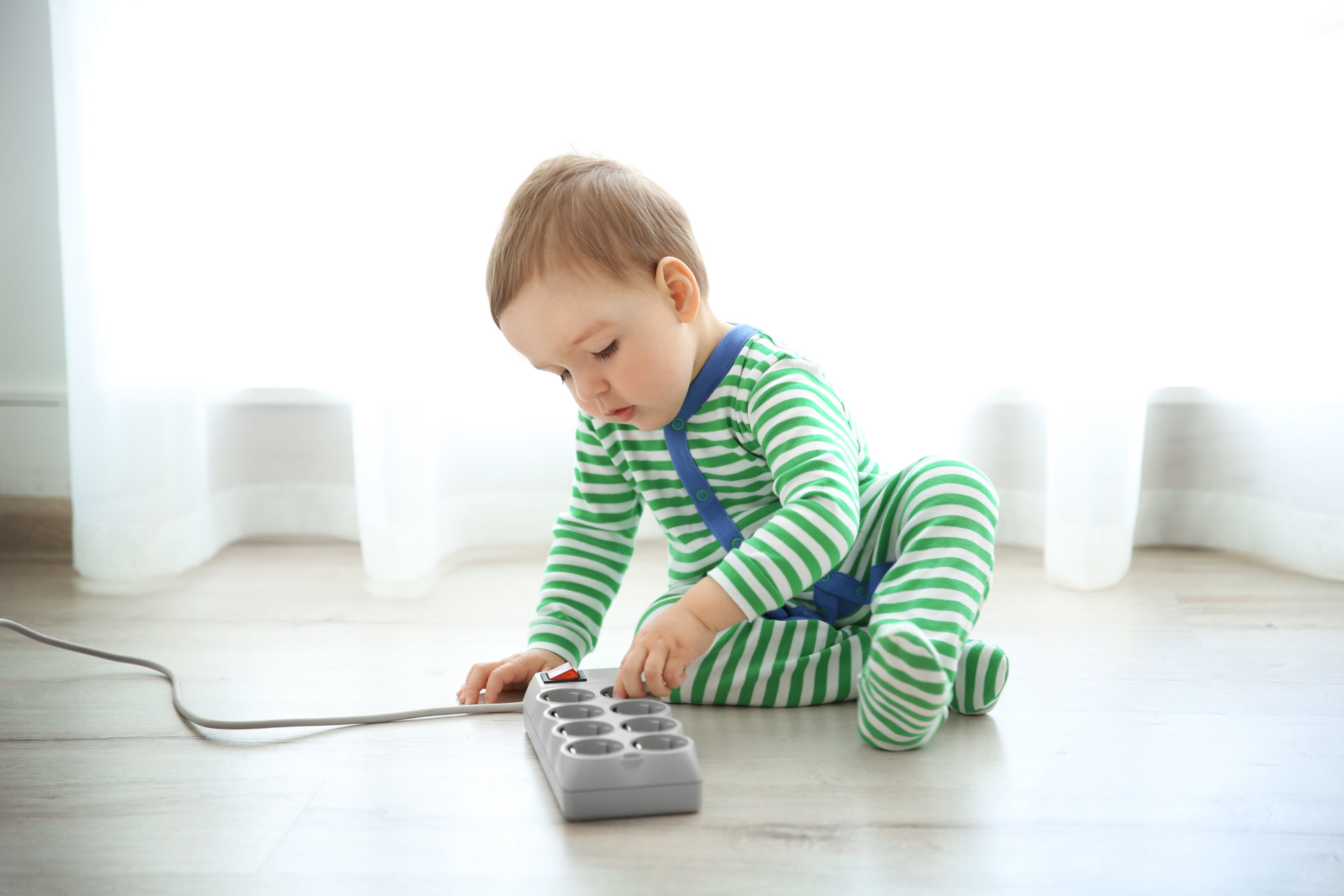
I don’t know what it is about electrical outlets, but curious babies are drawn to them like moths to a flame.
What makes matters worse is that they’re crazy dangerous, and the National Fire Protection Association states that each year, over 2400 children are injured due to sticking items into electric outlets. That’s nearly 7 children a day, and these accidents result in 6-12 fatalities per year. (source)
It’s so important to properly baby proof your outlets, and today we’ll show you exactly how to do it.
If you have a new home, your outlets may be safe.
If your home was built in 2015 or newer, you are lucky: the national electric code now mandates the use of tamper-proof outlets which eliminate the risk of small objects being forced into the outlets. If you’re living in Canada, these outlets have been mandated in new home constructions since 2009. (source)
Having said that, however: if you live in a brand new home, make 100% sure that all of the outlets are tamper proof.
Just because it’s the electrical code doesn’t absolutely mean that the electrician that wired your house actually used them rather than regular electrical outlets.
They are slightly more expensive and believe me when I say that some contractors cut corners.
Before you buy anything, take a look at your outlets.
On the left is a regular electric outlet. If you have an older house, these are probably what’s installed. If you look at the slots, they’re wide open and any small object can be pushed inside, resulting in a severe electrical shock.
On the right is a tamper-proof outlet. See how the prongs of the outlet have plastic inside? These are actually spring-loaded shutters, and they prevent any object from being inserted into them.
The way these work is that both sides of the outlet need to be pushed in at the same time for it to move. If someone, say a curious toddler, sticks something small in one of the prongs, nothing will happen at all.
But wait, there’s more…
Not only are there regular and tamper-proof outlets, but there are also decora outlets. They differ because of how the cover attaches to the outlet; regular outlets need a screw for the cover, but decora outlets have a cover that simply snaps into place.
On the left is a regular outlet, and on the right is a decora outlet. This is important to know, because baby-proofing solutions won’t work with both types of outlets.
Baby-proofing empty outlets
For your outlets that have nothing plugged into them, you have a few options.
Electrical outlet caps.
These are the cheapest and simplest option (click here to check price on Amazon), and you can buy a box of them big enough to proof your entire house for a few dollars.
They’re made of simple plastic and just plug into the empty outlet like a plug would. The front is made of non-grippy plastic, so your toddler won’t be able to pull them out.
On the downside, these have to be installed and removed by hand every time you want to use the outlet for something.
So, for example, if you’re vacuuming the living room and forget to put the cap back on the outlet after you unplug the vacuum… surprise, it’s no longer protected. No good.
Pros
- Cheap and easy to use.
- Effective, especially for the price.
Cons
- They need to be plugged in and removed every time you use the outlet.
Sliding plate covers.
A slightly more expensive (but safer) option are sliding plate covers.
These covers replace the ones already on your outlets, and it’s simple to do so with just a straight screwdriver. Even I can do it, and I’m not very house-savvy, if you know what I mean.
These covers have a spring-loaded piece of plastic that slides over the outlet slots, making it impossible to stick any kind of small object inside. Basically, they achieve the same effect as the electrical outlet caps, but automatically.
Click here to see them for standard outlets and here for decora outlets.
When you use the outlet, you slide it across and plug in whatever you using. When you take the plug out, it automatically snaps back, effectively securing the outlet.
These are definitely a more secure and safe option than the cheap outlet caps, but also a lot more expensive.
Pros
- More secure than caps.
- Automatic sliding cover means you can’t forget to protect the outlet.
Cons
- Considerably more expensive than the caps.
Baby-proofing occupied outlets and power cords.
If you have occupied outlets that you need to baby-proof, things get a little more complicated. But even still, there are options!
First and foremost, you want to stop them from being able to unplug anything. There are a world of problems that can happen as a result of them tugging out a cable!
First of all, they’re exposing an outlet that they’re then free to stick any number of things inside, and second of all, objects can be pulled down on top of delicate heads with the cable.
The easiest solution is to block off access to the outlet with furniture. If this is at all possible, hiding the outlets from sight is the safest bet, although that might mean disrupting the wonderful Feng Shui that you worked so hard on achieving. But what the inquisitive toddler can’t see won’t hurt them, so try to do this if at all possible.
If completely blocking off the outlet isn’t possible, you still have options.
There are a few different covers available that secure the outlet while making it impossible for the curious toddler to yank out of the wall.
My favorite solution: outlet covers.
These are great outlet covers that are virtually impossible for the prying toddler to get into.
They work on both regular outlets and decora outlets, and you can see them on Amazon right here.
These are easy to install, work great, and should keep your curious kids away from the outlets without having to worry.
You can have 2 plugs in the outlet with these, but due to the size if you’re using a very large plug in the wall, it might be too small for it.
The only big downside is that they’re a bit expensive especially if you have to baby proof a bunch of outlets, but they do work well.
Baby-proofing power strips/bars.
Power strips or bars are a little trickier to baby-proof, but it can still be done. You probably don’t have that many of them around the house, but if you’re like us, you have one for your TV area as well as computers.
While they’re convenient for purposes like those, they’re also a huge hazard for the crawling toddler. Since they sit on the ground and have a bunch of wires sticking out of them, they look like the perfect thing to play with.
Of course there’s the obvious danger of playing with electrical wires, but the last thing you want is to be enjoying the latest episode of Game of Thrones, only to have your little one unplug it at the worst possible moment!
My favorite solution: power strip covers
The best and easiest way I’ve found to baby-proof power strips is a strip cover like the Safety 1st model on the left (click here to check price on Amazon).
These are basically plastic shields that go over the top of the power strip, letting the cords stick through but making the plugs impossible to pull out.
Of course, it also makes it impossible for small objects to be stuck into the outlets of the strip, too.
Unfortunately, with all of these covers, they’re designed to allow the fattest of cables through. This means that there will be a gap around smaller cables, which can be an access point for small fingers and objects.
What I saw another blogger suggest was putting a strip of thick tape (duct or masking) over the slot where the cables come through. This also has the benefit of keeping the cables all together, so they can’t be unplugged.
Many power bars also have a switch that can be used to cut the power off. What I recommend is taping the switch at the “on” position so that your little one can’t turn it off.
Baby-proofing extension cords (and other long cables)
First and foremost, I’d recommend against using extension cables around the house unless it’s absolutely necessary.
There are risks no matter how old your child is:
- Teething mouths will find their way onto them, meaning an electrical shock hazard.
- Anything plugged into the extension cord can be toppled onto the ground with a small tug.
- They carry the same risk as electrical outlets, where small objects can be pushed inside.
- Once your little one starts to walk, they’re a definite tripping hazard.
If you absolutely have to use extension cords (or other long cables) around the house, you’d best child-proof them!
What I recommend doing is securing the end of the cord that’s plugged into the wall with one of the outlet covers I listed here. That covers one end.
Securing the length of the cable is another story, but we have options.
The simplest and cheapest method for securing semi-permanent cables is with gaffer’s tape (click here to check price on Amazon). Gaffer’s tape is made for the film and theater industry for taping down cables without causing damage to the surface, such as your carpets and floors.
Just lay the cable out in the most convenient way, then tape it down all along the length with the tape. It’s not the most attractive solution in the world, but it works if you absolutely need to have the cables laid out on the floor.
Duct tape or masking tape could work in a pinch, but there’s no guarantee that it won’t leave sticky residue on the floors or carpets.
Shortening long cables.
If you just need to make long cables shorter, there’s a simple solution to this.
First of all, for a quick DIY solution you could just wrap the cable up in a loop and tie it off with a zip tie or tape. Just make sure that there are no sharp parts on the zip tie!
For a solution that looks a little nicer, they make little inexpensive plastic cord shorteners (click here to check price on Amazon) that you wrap the cord up inside of, making it secure and as short as you need it to be.
They’re a good solution and really not that expensive.
What to do when you’re traveling.
If you’re staying in a hotel or AirBNB, there are going to be outlets and cables galore that your little minion can get their hands (and teeth) on.
The most simple solution is to bring a roll of tape with you. It’s a great temporary way to child-proof anything that might be a hazard:
- Outlets can be secured by putting tape over them.
- Long cords can be taped to the wall or floor.
- Light switches can be taped in an off position.
It really is a simple and effective way to keep things safe, and I’m sure you can find a spot to stash a roll of tape in your suitcase!
Summing it all up
Basically, when it comes to child-proofing your electrical gadgets, these are the fundamental steps:
- Secure any open outlets so that nothing can be stuck inside
- Secure any outlets that have plugs in them, so they can’t be removed
- Secure any power strips that may be around the house
- Tape down or remove any long extension cords, and shorten long cables

